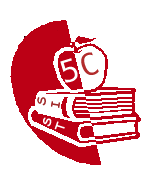Information Flow in Biological Systems: Intra-cellular, Inter-cellular, and Inter-individual
2013 SI
-
Overview
Our group created an group/team activity that is a hybrid between a concept map and a strip sequence that uses the conceptual framework of information flow. Our goal is for each group/team to organize an array of concepts (see below) into a model that fits into one of three possible hierarchical levels (intra-cellular, inter-cellular, and inter-individual). We anticipate that this Teaching Tidbit (TT) could be used at multiple levels and at the beginning and/or the end of a class. For example, this TT could be used at the beginning of an introductory biology course to establish the model for the semester; the model being that the course will focus on the general underlying principles of biology and use specific examples to demonstrate the basic conceptual frameworks. It could also be used in an advanced-level course to assess how well the students understand and can apply fundamental concepts to new data sets.
-
Rationale
We believe that students are capable learners, but because we, as instructors, tend to emphasize facts, many students have little understanding of common underlying principles. Therefore, we chose information flow as the model that will facilitate student understanding of basic principles in very different, yet interdependent, biological systems.
-
Concepts
- Stimulus triggers a signal.
- Signal is transmitted.
- Signal is perceived.
- Signals are integrated leading to a response.
- Response modulates signaling.
- Information is stored.
- Response occurs.
- Your choice.
-
Resources
The word cloud below provides hints for the construction of a concept strip sequence using the above concepts within one of the three levels described above. Colors were chosen so as not to discriminate against those who are red-green colorblind. Click on the image to enlarge.
-
Learning Goals
- Organize general biological concepts into a framework and provide concrete examples.
- Articulate how biological pathways integrate signals, receptors, and responses.
- Identify similar principles of information flow on different levels of biological organization.
-
Don't Know What to Do With These Ideas Yet
- Information/signals can be short lived or longer lasting
-
Concept Strip Sequencing Activity Timeline
- Minute 0-2
- Introduction
- Provide a randomized list of concepts to each group.
- Provide one set of cards and tape with themes printed on them to each group (N=6)
- Provide each group with one of the following levels: Inter-cellular, Intra-cellular, or Inter-individual (two replicates of each level)
- Facilitators explain activity and then one facilitator goes to each group
- Minute 2-11
- Group identifies specific topic in the first minute
- Facilitator guides group during activity
- Facilitator offers formative feedback
- Facilitator keeps group on track
- Facilitator keeps track of time
- Minute 11-17
- Each group describes their concept strip in one minute or less
- Minute 17-20
- Facilitators lead a brief discussion about how the different levels are inter-related and inter-dependent
- Minute 0-2
-
Assessment
- Formative - facilitator feedback
-
Summative: At home, write two 500-750 word reflective essays:
(1) How did this activity help you organize the information you already have?
(2) What else do you want to know to deepen your understanding of information flow at the intra-cellular, inter-cellular, and inter-individual levels?
Group:
- Log in to post comments

